
Schinia, commonly called flower moths, is a large genus of moths belonging to the family Noctuidae. The genus has a Holarctic distribution with the vast majority of species being found in North America, many with a very restricted range and larval food plant.
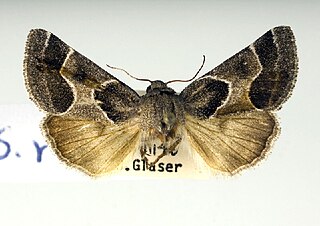
Schinia rivulosa, the ragweed flower moth, is a moth of the family Noctuidae. The species was first described by Achille Guenée in 1852. It is found in North America from Quebec to Florida, west to Arizona, north to Oregon and North Dakota. There is one generation per year.

Schinia ciliata is a moth of the family Noctuidae. It is found from southern California east to Utah, Arizona, Colorado, New Mexico, western Kansas and Oklahoma, and scattered throughout Texas.
Schinia crotchii is a moth of the family Noctuidae. It is found from southeastern Arizona west to the Peninsular Ranges of southern California and north in south-eastern Washington and southern Idaho.

Schinia obliqua is a moth of the family Noctuidae. It is found in North America from California to Colorado and Western Texas. Adults of this species fly July through September.
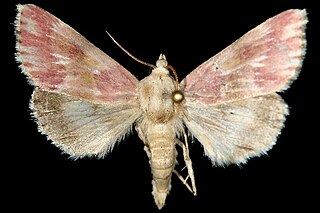
The bleeding flower moth is a moth of the family Noctuidae. It is found from North Carolina to Florida, west to Texas, north to Montana. There is also a disjunct population in Ontario.

Schinia aurantiaca is a moth of the family Noctuidae. It is found in North America, including California and Arizona.
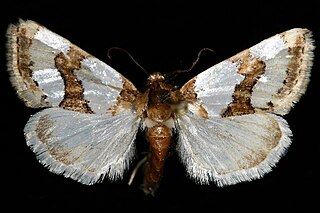
Schinia chrysella is a moth of the family Noctuidae. It is found throughout the central United States south to Monterry, Mexico.
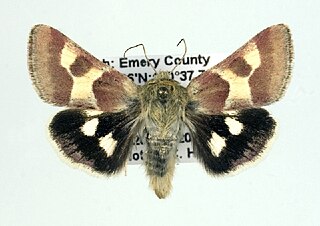
Schinia suetus is a moth of the family Noctuidae first described by Augustus Radcliffe Grote in 1873. It is widespread in the mountains of western North America, from southern Alberta west to British Columbia, south at least to Colorado and California, east to Idaho and New Mexico.

Schinia nundina, the goldenrod flower moth, is a moth of the family Noctuidae. The species was first described by Dru Drury in 1773. It is found in North America from Minnesota to southern Ontario and Nova Scotia, south to central Florida and southern Texas. Records include Arizona, Kansas, Nebraska, New York, Maryland, Oklahoma and South Carolina.

Schinia obscurata, the obscure schinia moth, is a moth of the family Noctuidae. It is found from Ontario and Quebec south into the United States, where it has been recorded from Illinois, New Jersey, South Carolina, Wisconsin, Kansas, Montana, Nebraska, North Dakota, Oklahoma and Texas.
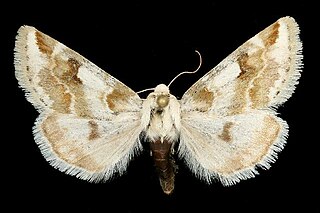
The rabbitbush flower moth is a moth of the family Noctuidae. It is found from central Arizona and New Mexico, north to Colorado, south-western Wyoming and Utah, west to Nevada and California, and north to Oregon, Idaho and Washington.
Schinia rufocostulata is a moth of the family Noctuidae. It is only known from south-western Texas.
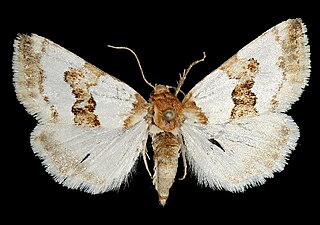
Schinia chryselloides is a moth of the family Noctuidae. It is found in Colorado from the base of the foothills in Jefferson County, east to Lincoln County, in extreme south-eastern Colorado, south to south-eastern Socorro County, New Mexico, and east to the south-eastern panhandle of Texas and extreme southern Texas.
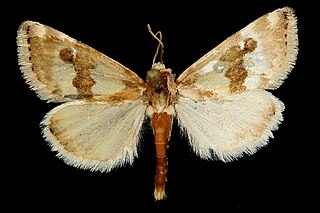
Schinia alencis is a moth of the family Noctuidae. It is found from south-eastern Colorado to south-eastern Arizona east to western Oklahoma, northern Texas to south-western and south-eastern Texas.

Schinia lynda is a moth of the family Noctuidae. It is only known from the dunes in the high desert of south-central Oregon.
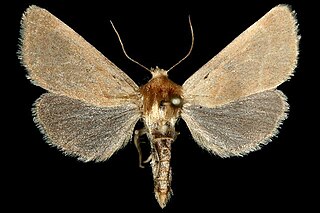
Schinia immaculata is a moth of the family Noctuidae. It is endemic to the area surrounding the Colorado River in the Grand Canyon in Coconino County, Arizona.
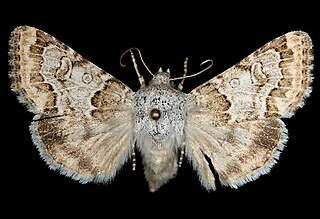
Schinia deserticola is a moth of the family Noctuidae. It is found from southern California to southeastern Arizona and north to west central Utah and southeastern Oregon.
The Maroon Washed Flower Moth is a moth of the family Noctuidae. It is found in central Florida.

Schinia psamathea is a moth of the family Noctuidae. It is known from east-central Georgia southwestward to the Panhandle of Florida, southeastern Alabama, and southwestern Mississippi. It seems to prefer sandy soils either in dune type habitats or near sandy beaches.
















